China, Southern Dynasties (420-589) to Sui dynasty (589-619). The compressed globular body rising from a tall waisted foot, surmounted by a long waisted neck with a galleried rim, set on the shoulder with a double-stranded handle ending with a dragon head biting the angular rim, opposite a chicken-head mock spout and two strap handles on each side of the shoulder, splashed with a thin olive-green glaze dripping irregularly toward the foot. Provenance: From a private collection in Bath, United Kingdom. Nicholas Pitcher Oriental Art, London, acquired from the above. Nicholas Sotheby Pitcher was formerly a director of Christie's and lead the Oriental Department in South Kensington from 1976 to 1990, after which he left to set up his own business, specializing in early Chinese pottery and bronzes, and later Chinese works of art. Condition: Superb condition with minor old wear and some firing flaws. Extremely rare in this pristine state of preservation. Weight: 4,270 g Dimensions: Height 44 cm The so-called 'Heavenly Chicken Ewers' with their mock spouts, which can either be solid, or hollow but without connection to the inside, or with a tiny, non-functional pierced opening, were purposefully made as tomb wares. They are perhaps the most distinctive and representative ceramic vessels of the tumultuous, yet innovative period between the Han (206 BC to AD 220) and Tang dynasties (618-907). Production began in the Jin dynasty (265-420) by the southern Yue kilns of Zhejiang province, but was soon copied by other southern manufactories and later adopted by northern celadon kilns. The wide use of such ceramics, including the tombs of emperors, reflects the auspicious symbolism of the chicken motif. Chickens were believed to have the power to exorcise evils, cure diseases and have other beneficent effects. Images of chickens were therefore painted and real chickens or replicas in cast metal or carved wood were hung on front doors. In Chinese, the word for chicken is homophonous with the term ‘auspicious’ and as a motif chickens enjoyed continuous popularity right up to the Ming (1368-1644) and Qing (1644-1911) periods, when they provided the decoration of the fabled imperial porcelain ‘chicken cups’. This ewer with its finely detailed chicken and dragon heads ranks among the largest examples of its type. Chicken-head ewers generally range from 10 to 35 cm in height and the present piece is one of the very few examples of larger size. The remains of a chicken-head ewer of similar proportions (43 cm high), but with the chicken head missing, were recovered from the tomb of the Northern Wei emperor Xuanwu (reigned 500-515) in Luoyang, Henan province, together with two smaller similar ewers (of about 36 cm), see Kaogu 1994, no. 9, pl. 4, fig. 6. For another ewer from the tomb of Prince Gao Run (543-575), brother of the founding emperor of the Northern Qi dynasty (550-577), in Cixian, Hebei, see Kaogu 1979, no. 3, pl. 4, fig. 4. Literature comparison: Ewers of comparable size and shape to this lot are extremely rare. One such vessel was unearthed from a Northern Qi tomb in Hejian county, Hebei, see Zhongguo chutu ciqi quanji / Complete Collection of Ceramic Art Unearthed in China, Beijing, 2008, vol. 3, pl. 15. Other examples from the Idemitsu Museum of Art, Tokyo, the Museum of Oriental Ceramics, Osaka, and other collections are illustrated in Yutaka Mino and Katherine R. Tsiang, Ice and Green Clouds: Traditions of Chinese Celadon, Indianapolis Museum of Art, Indianapolis, 1987, cat. no. 36 and figs. 36 a-e. For comparison see a Yue ware ewer included in the exhibition Vibrant Greens, Celadon Glazes over Two Millennia: Masterpieces from the East Zhejiang Museum of Yue Celadon Ware, Arthur M. Sackler Museum of Art and Archaeology, Peking University, Beijing, 2013, cat. no. 68. Compare also a related Yue chicken-head ewer (47.9 cm high), dated c. 570 AD, in the collection of the Minneapolis Institute of Art, accession number 2007.38. Auction re
China, Southern Dynasties (420-589) to Sui dynasty (589-619). The compressed globular body rising from a tall waisted foot, surmounted by a long waisted neck with a galleried rim, set on the shoulder with a double-stranded handle ending with a dragon head biting the angular rim, opposite a chicken-head mock spout and two strap handles on each side of the shoulder, splashed with a thin olive-green glaze dripping irregularly toward the foot. Provenance: From a private collection in Bath, United Kingdom. Nicholas Pitcher Oriental Art, London, acquired from the above. Nicholas Sotheby Pitcher was formerly a director of Christie's and lead the Oriental Department in South Kensington from 1976 to 1990, after which he left to set up his own business, specializing in early Chinese pottery and bronzes, and later Chinese works of art. Condition: Superb condition with minor old wear and some firing flaws. Extremely rare in this pristine state of preservation. Weight: 4,270 g Dimensions: Height 44 cm The so-called 'Heavenly Chicken Ewers' with their mock spouts, which can either be solid, or hollow but without connection to the inside, or with a tiny, non-functional pierced opening, were purposefully made as tomb wares. They are perhaps the most distinctive and representative ceramic vessels of the tumultuous, yet innovative period between the Han (206 BC to AD 220) and Tang dynasties (618-907). Production began in the Jin dynasty (265-420) by the southern Yue kilns of Zhejiang province, but was soon copied by other southern manufactories and later adopted by northern celadon kilns. The wide use of such ceramics, including the tombs of emperors, reflects the auspicious symbolism of the chicken motif. Chickens were believed to have the power to exorcise evils, cure diseases and have other beneficent effects. Images of chickens were therefore painted and real chickens or replicas in cast metal or carved wood were hung on front doors. In Chinese, the word for chicken is homophonous with the term ‘auspicious’ and as a motif chickens enjoyed continuous popularity right up to the Ming (1368-1644) and Qing (1644-1911) periods, when they provided the decoration of the fabled imperial porcelain ‘chicken cups’. This ewer with its finely detailed chicken and dragon heads ranks among the largest examples of its type. Chicken-head ewers generally range from 10 to 35 cm in height and the present piece is one of the very few examples of larger size. The remains of a chicken-head ewer of similar proportions (43 cm high), but with the chicken head missing, were recovered from the tomb of the Northern Wei emperor Xuanwu (reigned 500-515) in Luoyang, Henan province, together with two smaller similar ewers (of about 36 cm), see Kaogu 1994, no. 9, pl. 4, fig. 6. For another ewer from the tomb of Prince Gao Run (543-575), brother of the founding emperor of the Northern Qi dynasty (550-577), in Cixian, Hebei, see Kaogu 1979, no. 3, pl. 4, fig. 4. Literature comparison: Ewers of comparable size and shape to this lot are extremely rare. One such vessel was unearthed from a Northern Qi tomb in Hejian county, Hebei, see Zhongguo chutu ciqi quanji / Complete Collection of Ceramic Art Unearthed in China, Beijing, 2008, vol. 3, pl. 15. Other examples from the Idemitsu Museum of Art, Tokyo, the Museum of Oriental Ceramics, Osaka, and other collections are illustrated in Yutaka Mino and Katherine R. Tsiang, Ice and Green Clouds: Traditions of Chinese Celadon, Indianapolis Museum of Art, Indianapolis, 1987, cat. no. 36 and figs. 36 a-e. For comparison see a Yue ware ewer included in the exhibition Vibrant Greens, Celadon Glazes over Two Millennia: Masterpieces from the East Zhejiang Museum of Yue Celadon Ware, Arthur M. Sackler Museum of Art and Archaeology, Peking University, Beijing, 2013, cat. no. 68. Compare also a related Yue chicken-head ewer (47.9 cm high), dated c. 570 AD, in the collection of the Minneapolis Institute of Art, accession number 2007.38. Auction re
.jpg)
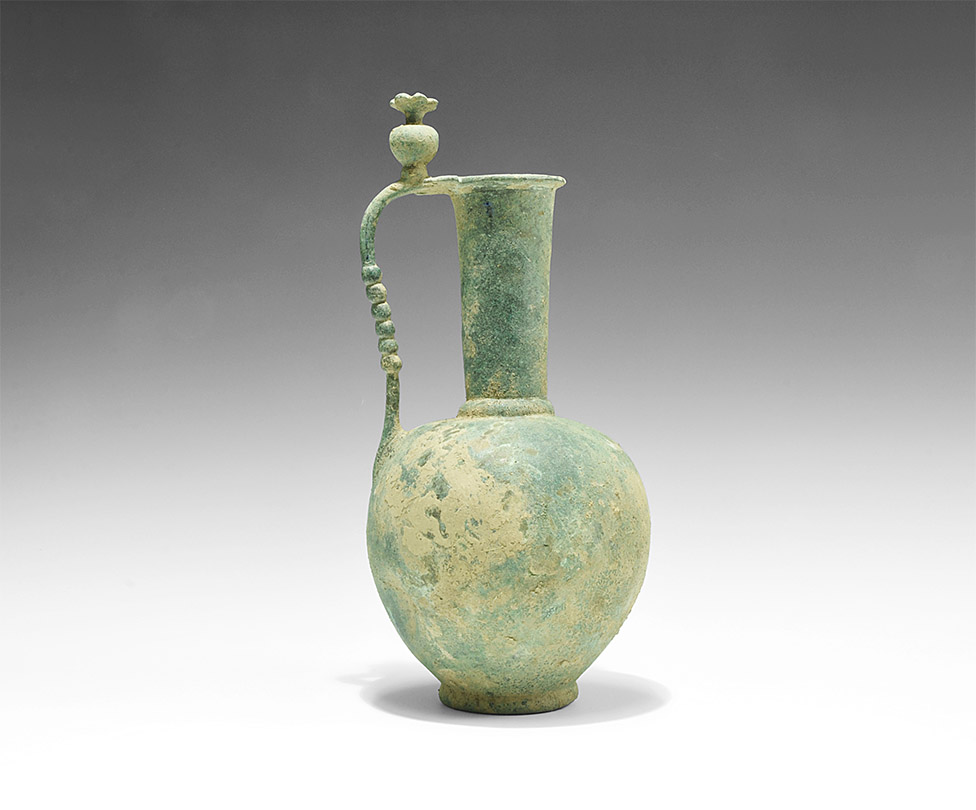
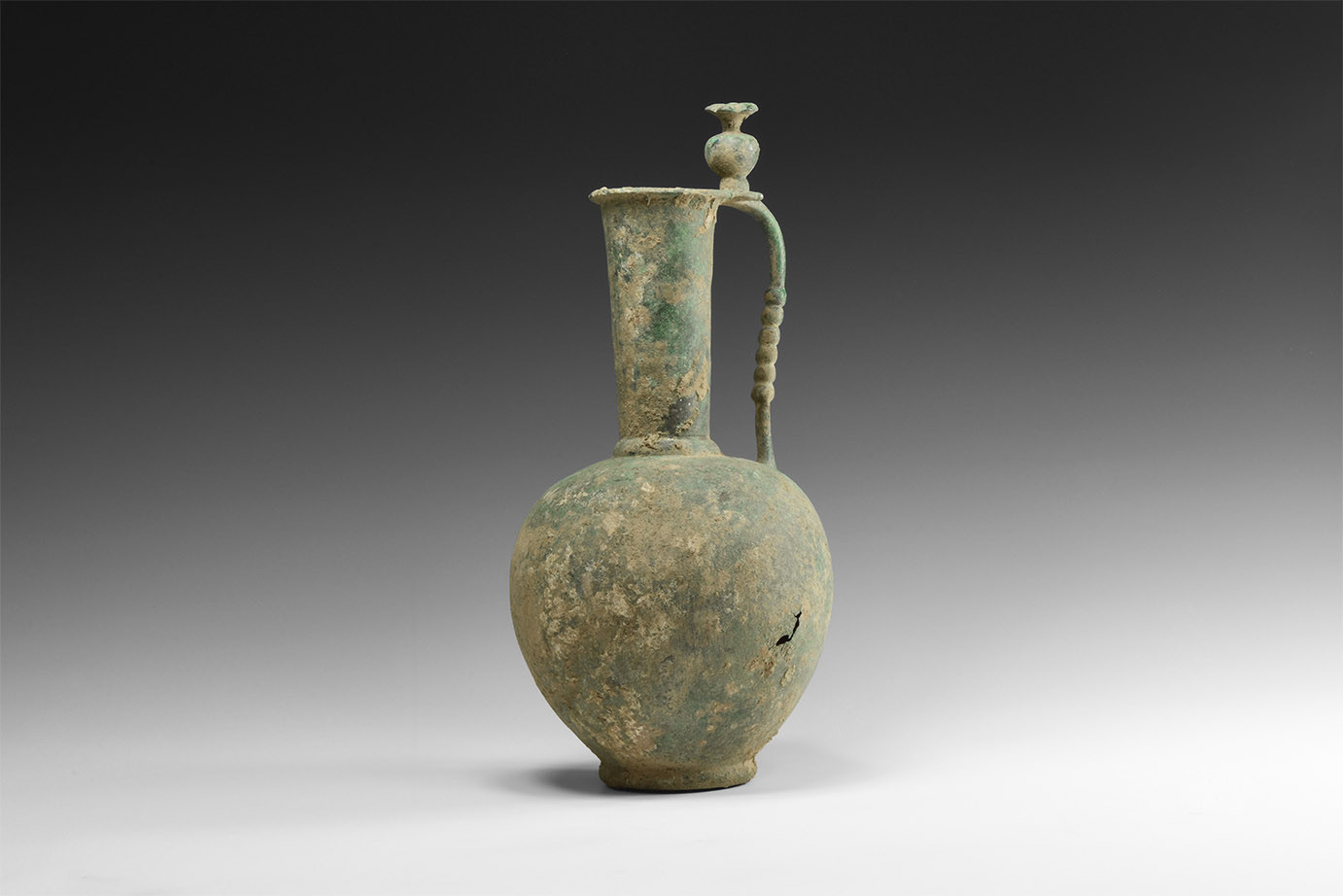
.jpg)
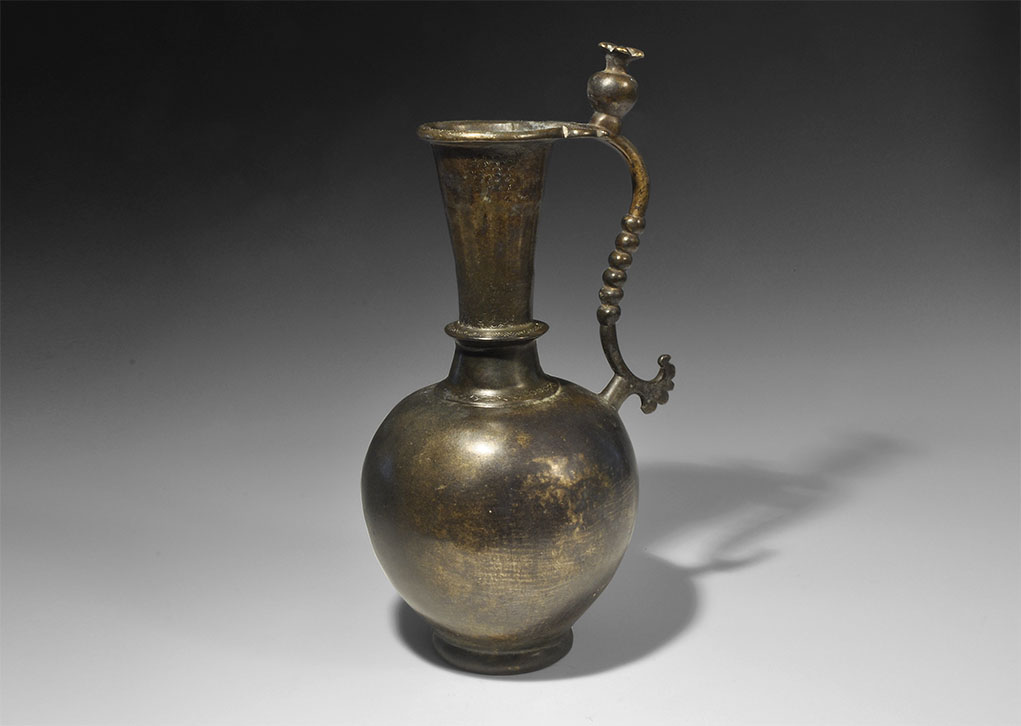
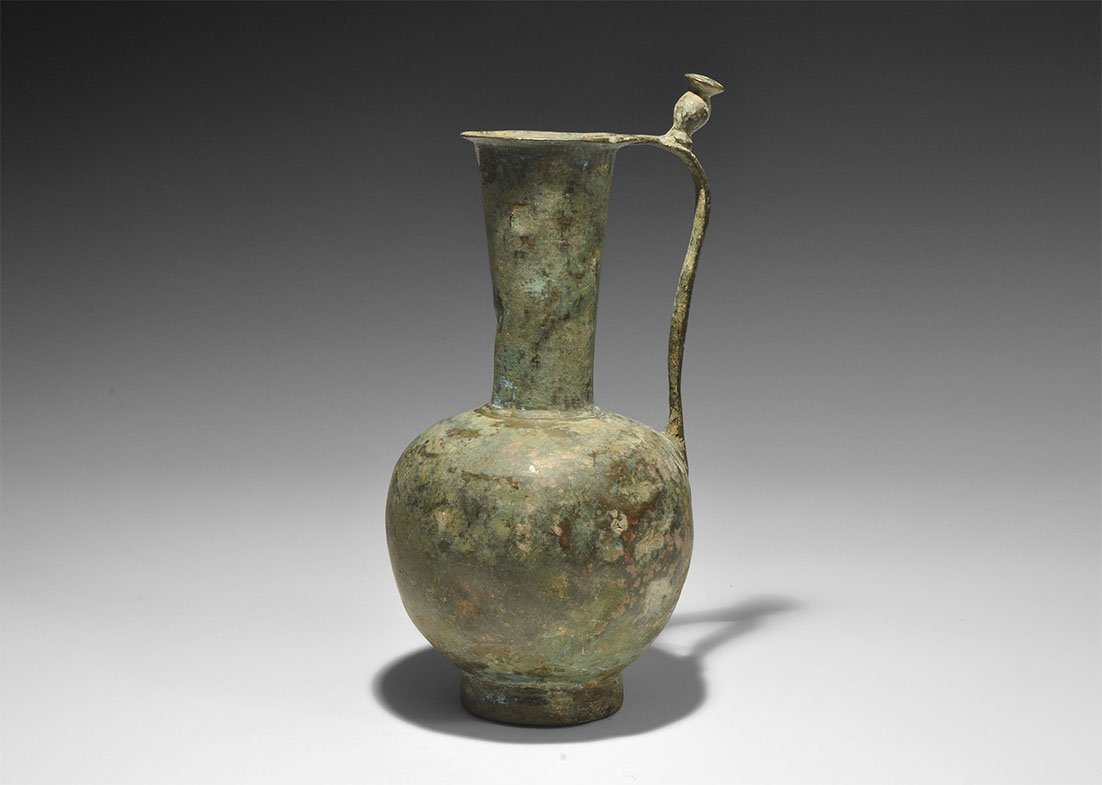

.jpg)
.jpg)
.jpg)
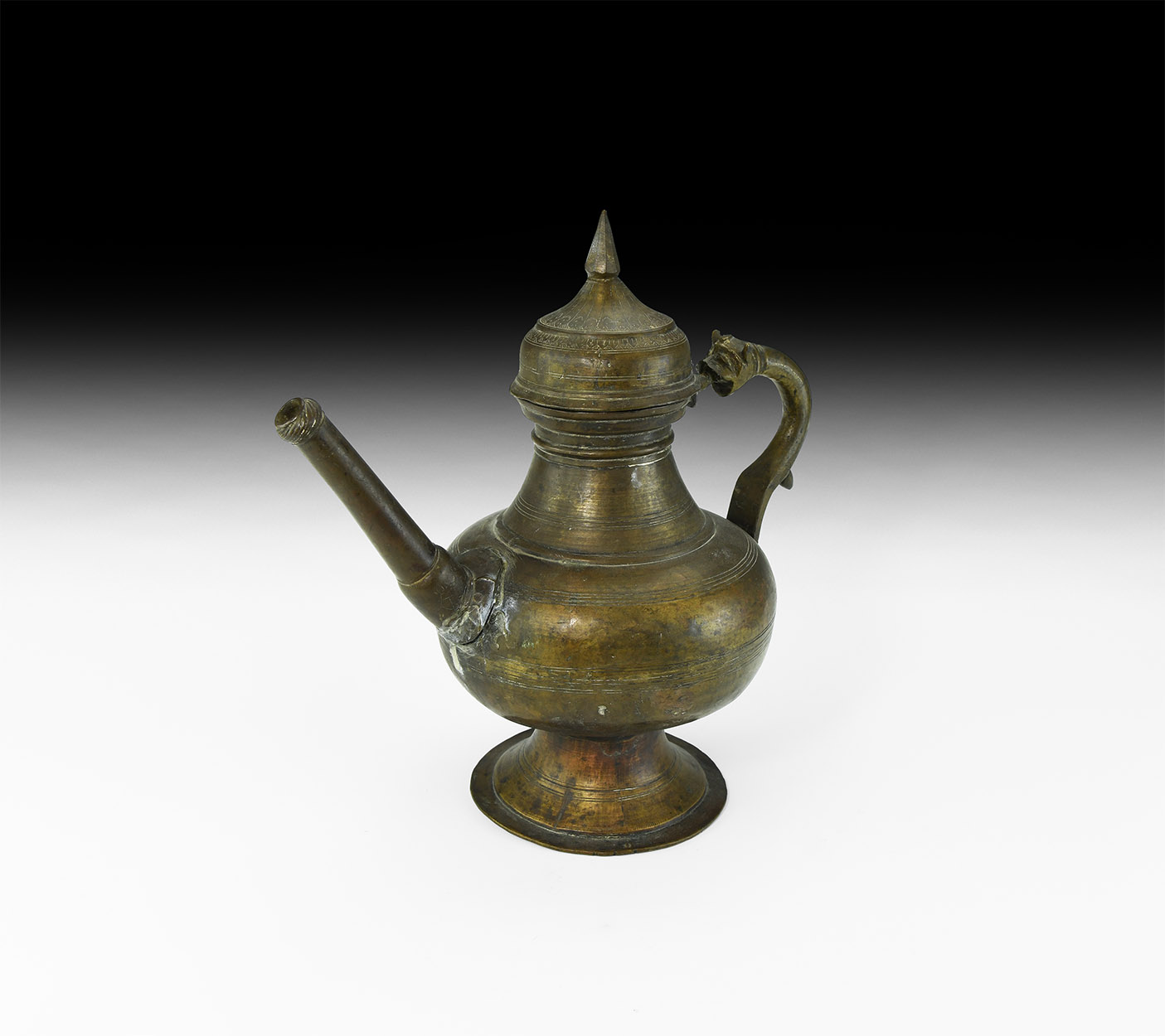
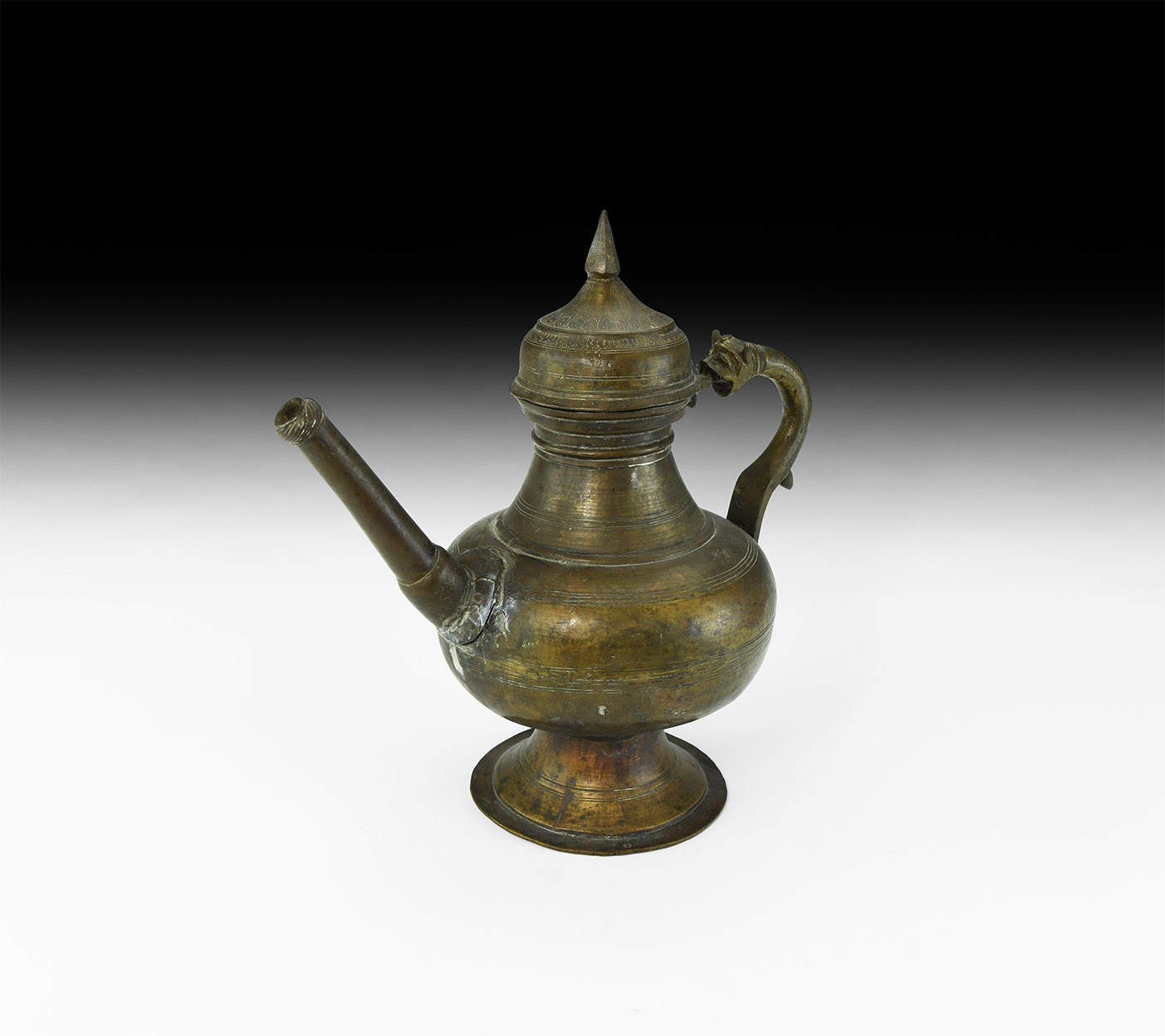
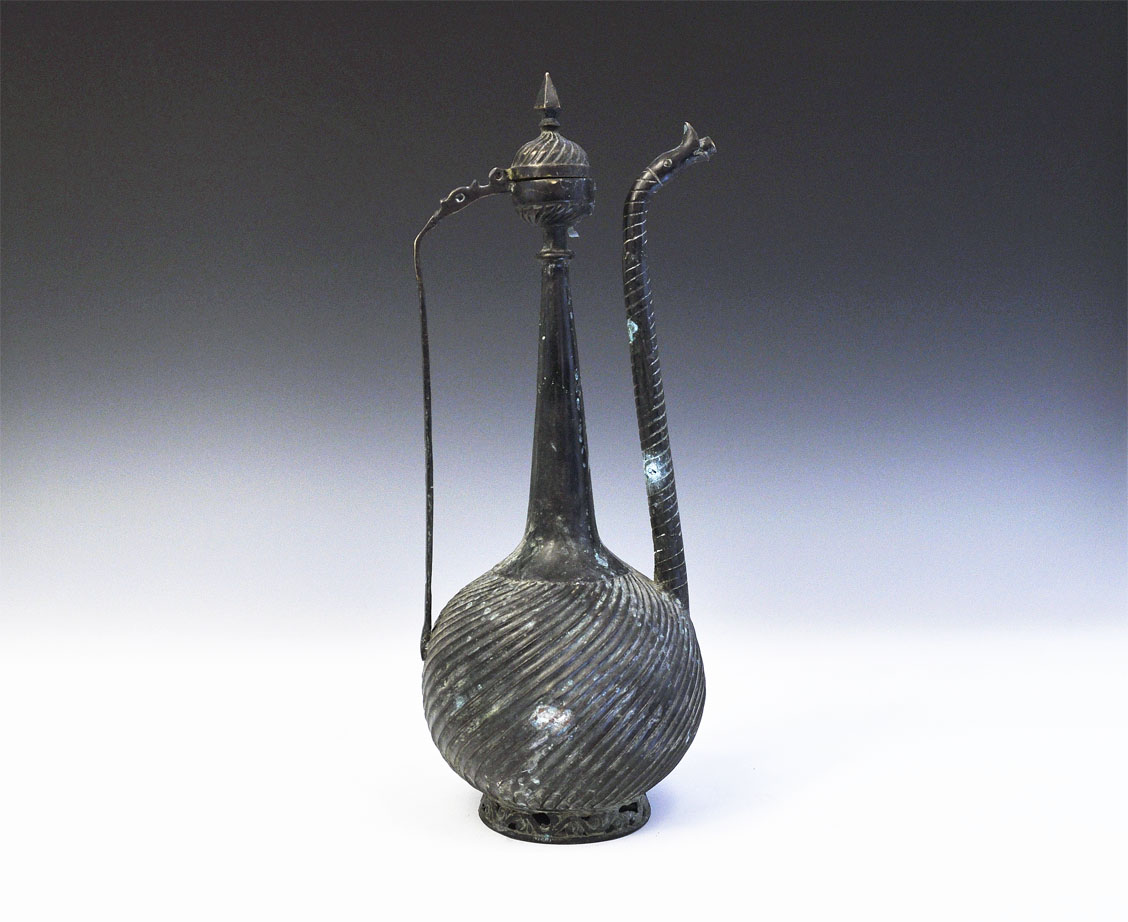
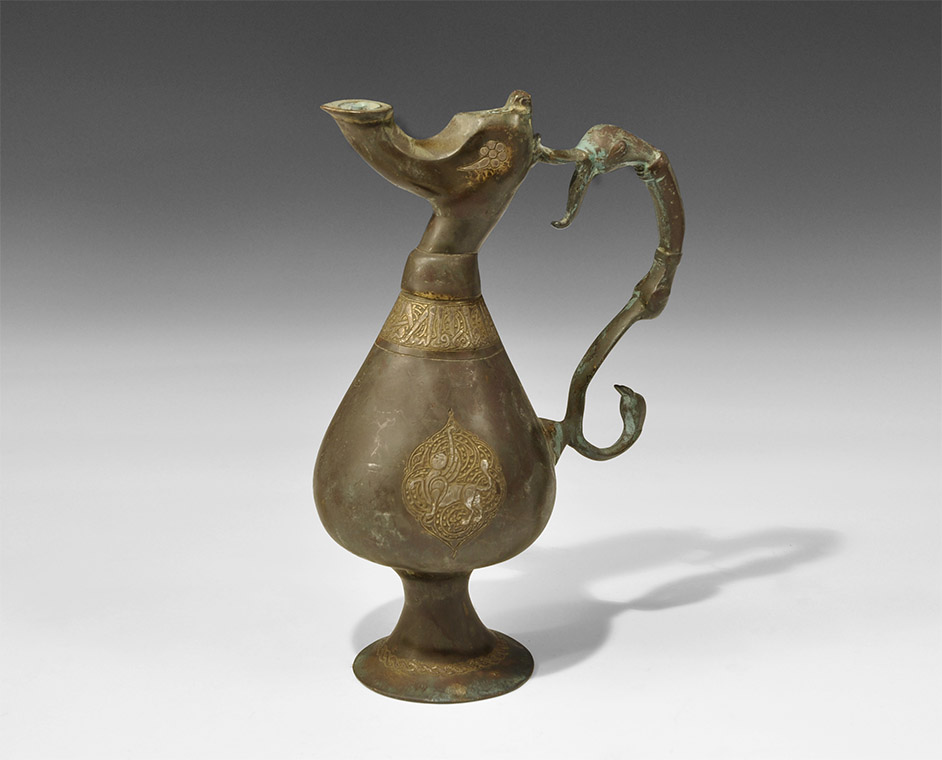

Try LotSearch and its premium features for 7 days - without any costs!
Be notified automatically about new items in upcoming auctions.
Create an alert